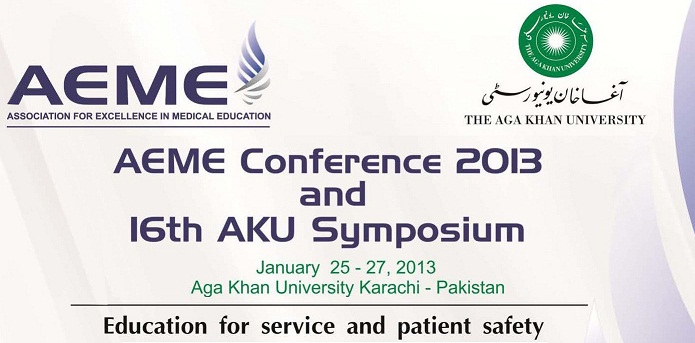Day 1 : Poster Presentations (Theme: Patient Safety)
Quality indicators for critical INR results in a haemostatic laboratory
Location
Auditorium Pond Side
Start Date
26-1-2013 10:30 AM
Abstract
Background: The aim of this study was to evaluate the performance indicators for critical INR results.
Methods: This is a clinical audit conducted at The Aga Khan University Hospital, Karachi from February to September 2010. Samples were received in the laboratory in 3.2% Na citrate tubes and PT/INR was performed (Sysmex ®1500, Innovin with ISI of 1.02). Critical value of INR was defined as more than 5.0. All critical INRs were rechecked and if the value remained unchanged, the patient was contacted and an in house questionnaire was filled. All patients irrespective of age and gender with critical INR were included. Exclusion criterion was defined as those patients who could not be contacted. Performance indicators were also identified.
Results: Total INR values that were reported are 36861. Out of these, 287(0.77%) had INR above 5.0 (or 7/1000 tests). There were 211 evaluable patients out of which 81 (38.4%) were males and 130 (61.6%) were females. Majority of the patients were between the ages of 60 to 80 years. Warfarin intake accounted for critical INR in 94.3% patients and valvuloplasty was the commonest indication (48%). Only 7% had bleeding on Warfarin therapy while majority (84%) had no adverse effects.
Conclusions: Critical INR should be communicated at priority basis. Performance indicators should be monitored quarterly. Females, older age group and patients with valvuloplasty are at higher risk of developing critical INR.
Key words: Critical INR, Performance indicator, Clinical audit
Quality indicators for critical INR results in a haemostatic laboratory
Auditorium Pond Side
Background: The aim of this study was to evaluate the performance indicators for critical INR results.
Methods: This is a clinical audit conducted at The Aga Khan University Hospital, Karachi from February to September 2010. Samples were received in the laboratory in 3.2% Na citrate tubes and PT/INR was performed (Sysmex ®1500, Innovin with ISI of 1.02). Critical value of INR was defined as more than 5.0. All critical INRs were rechecked and if the value remained unchanged, the patient was contacted and an in house questionnaire was filled. All patients irrespective of age and gender with critical INR were included. Exclusion criterion was defined as those patients who could not be contacted. Performance indicators were also identified.
Results: Total INR values that were reported are 36861. Out of these, 287(0.77%) had INR above 5.0 (or 7/1000 tests). There were 211 evaluable patients out of which 81 (38.4%) were males and 130 (61.6%) were females. Majority of the patients were between the ages of 60 to 80 years. Warfarin intake accounted for critical INR in 94.3% patients and valvuloplasty was the commonest indication (48%). Only 7% had bleeding on Warfarin therapy while majority (84%) had no adverse effects.
Conclusions: Critical INR should be communicated at priority basis. Performance indicators should be monitored quarterly. Females, older age group and patients with valvuloplasty are at higher risk of developing critical INR.
Key words: Critical INR, Performance indicator, Clinical audit

